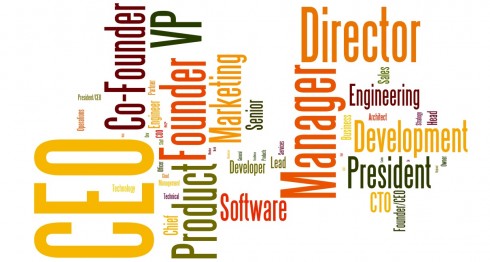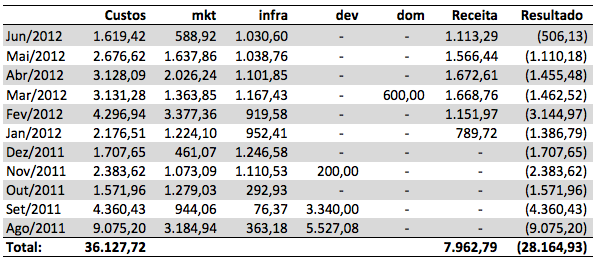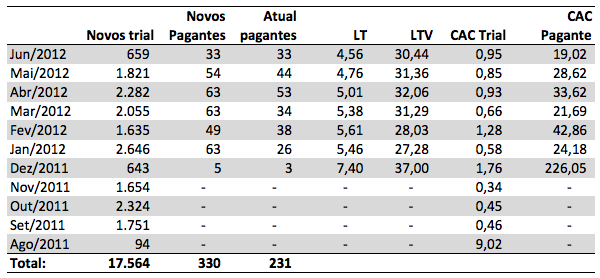Who is coming to the Business of Software Conference in Boston, 1-3rd October? We don’t publish people’s personal information but this should give you an idea of the type and level of person attending as well as the names of the companies who are already signed up. We have just 50 places remaining. The next 30 registrations will receive a $500 discount on full ticket price.
Wordle of Attendees by Job Title

For those of you that love poring over data, this is the full list of Job Titles.
Co-Founder, CEO, IT Manager, VP of Application Development, Founder, Senior Software Engineer, CEO, COO, CEO, VP of Engineering, BI consultant, Product Manager, Senior Software Engineer, Managing Partner, Seed Funds, Senior Manager, Senior Development Manager, CEO, CEO, VP of Product Development, CEO, CEO, CEO, Chief Sumo, CEO, IBM Advisory Software Engineer, CEO, CEO, CEO, CEO, CEO, General Manager, VP of Atalasoft Products, CEO, CEO, CMO/SVP Marketing and Products, Senior Director of Marketing, VP – Sales of North America, CEO, CEO, CEO, CEO, CEO, VP Marketing, CEO, Entrepreneur, CEO, CEO, VP of Marketing, VP of Software Development, CEO, CEO, CEO, Software Developer, CEO, Skill Engineering, Skill Engineering, CEO, CEO, All-around Coder, Founder/CEO, CEO, Co-Founder, President, Co-Founder, President, Co-Founder, Director of Engineering, Software Technology Manager, Co-Founder, Co-Founder, Founder, Co-Founder, President/CEO, Co-Founder, President, Co-Founder, Architect and hat wearer, Co-Founder, Director, Logistics, CEO, Head of Marketing, Co-Founder, Co-Founder, Co-Founder, Founder, Product Manager, Founder, President, Founder, CEO, Founder, Owner, Founder, CEO, CTO / CSO, Director of Client Care, Director of Human Resources, Director of Product Strategy, Director of Programming, Director of Sales and Marketing, VP of Operations, VP of Sales and Marketing, Founder, Founder, Founder, Founder, Founder, CEO, CEO, Development Team Lead, President/CEO, VP Sales, VP Engineering, Director Engineering Delivery, CEO, CEO, Center of Excellence Leader, CEO, VP Engineering, Director, Founder/CEO, Center of Excellence Lead, VP of cure.org, Director of Market Strategy, Exec Jr VP, CEO, Director of Software Development, President/CEO, President, President, Software Developer, CEO, CTO, Director of Marketing, General Manager, CXO, CEO, Author, CEO, Marketing, Information Security Consultant, CEO, President, Director of Engineering, Director of Engineering, President, Product Manager, CEO, CIO, CTO, Product Marketing, Head of Product Development and Online Operations, CTO, Sr. Director, Product Management, Art Director, Partner, Founder/CEO, Product Designer / Developer, CEO, Member of Technical Staff, Member of Technical Staff, Senior Developer, CEO, Lead Developer, Partnership Development, VP Biz Dev, Founder/CEO, Designer / Developer, Chief Innovation Officer, Chief Cat Herder, Web Developer, Chief Technology Officer, Co-Founder, Co-Founder, Founder, Senior VP Engineering, Owner, Consulting Architect, President, Manager, Software Engineering, VP, Corporate Cloud Services, Founder/CEO, Product Manager, CEO and Founder, President, COO, Director of Software Development, Development Manager, GLA Manger, EMT,GLA Board,Product Manager for S Pl, North American Regional Manager, Regional for EMEA, Founder, Professor, Co-Founder, Marketing, Marketing Manager, Support Engineer, Co-Founder and CTO, Controller, CEO, VP, Founder, Partner, Partner, Software Developer, CEO, CTO, Senior Software Engineer, Senior Technical Writer, VP of Business Development, Owner/Head of R&D, COO, Owner, VP, CEO, CEO, Product Marketing Manager, Consultant, Partner, Principal Architect, CTO, Marketing Director, Marketing, Marketing, Head of Marketing, Sales, Sales, CEO, CEO, CEO, Founder, Co-Founder, Co-Founder, Chief Servant Officer, CEO, COO, CTO, Director, Product Development and Product Manageme, Founder, Director of IT Development Firmwide, Director of Product Development, Business Development Manager – Apps, Development Lead, Director, Cloud Strategy, Program Manager, VP, Cloud, Founder/CEO, Co-Founder, Business Director, Founder, Founder, President, Founder, Technology Editor, Founder, Human Resources, CPO, CTO, Director, Product Manager, VP, Business Development, Founder/CEO, CEO, Technical Director, CEO, Chief Scientist, Chief Scientist, Founder, Dev & Ops Manager, CEO, CEO, Co-Founder, Co-Founder/CTO, Co-Founder/President, CTO, Head of Marketing, General Manager, CFO, Co-CEO, President, Chair, Chief Executive Officer, Co-Founder, CTO, Director of Software Development , President, VP, Operations, VP, Sales, Director of Engineering, CEO, Founder, Director, Product Manager, CEO, CEO, Head of Creative, Innovator, Oracle Tools Business Unit Manager, Product Manager, Product Manager, Software Engineer, Joint Head, Fledgling Markets division, Business Unit Manager, Head of Product, Product Manager, Co-Founder, Project Manager, Founder, CEO, Director, Student, CEO, Director, CEO, Programmer, Rhino Product Manager, President , VP of Product Dev., CEO, Senior Product & Marketing Manager, Dir of Engineering, Dir of Engineering, Director of Applied Research, Co-Founder, Special Projects, CEO, President, CTO, VP OPS, CTO, CEO, Owner / Founder, Founder, Google Fighter, President, VP Development, CEO, Chief of Staff, Director of Marketing, VP of Products, CEO, CEO, Rabid Generalist, Senior Software Engineer, President, Chief Evangelist, VP, VP, Web & Enterprise Services, President, CEO, President/CEO, CEO, Business Development, Marketing Manager, Entrepreneur , CEO, Lead Software Systems Engineering, Managing Director, VP Product Strategy, CEO, Development Manager, Services Manager, CEO, Co-Founder, Co-Founder, President, COO, Founder, CEO, Marketing Associate, Professional Services Director, Senior VP, Operations, Director Product Management, Director Software Development, VP, Product Management, Sr. Lead Software Engineer, Sr. Manager, Release Management, Sr. Technology Manager, CEO, Product Manage, Product Manager, President & CTO, problem solver, Director of Technology, Developer, Founder, CEO, Co-Founder, Founder, Lead Architect, Operations Manager, President, Product Manager, Product Specialist, VP of Sales, Co-Founder, Founder, CEO, President, Founder/CEO, Lead Software Architect, Founder, CEO.
Companies Attending
This is the list of companies attending – the companies have been de-duped so if more than one person is coming from a single company, it will only appear once.
Safe Software Inc, Canonical USA, Compete Inc, Intercom, GoECart, agileDSS, TBD, The Birdy Inc, Fire Ant Software, Enova, 4ormat, Acquia, Adzerk, Appointment-Plus, Apptegic, Avangate, Avontus Software, Balsamiq, Biamp Systems, Computer Technology Solutions, Inc, Cosoft, CURE International, DoX Systems, drinklobby, Encryptomatic LLC, EngView Systyems Sofia JSC, Esri UK, Foxpert, Gantry, Inc., GlobalSpec, Inc, Google, Inc., Greycon Ltd, Icon Enterprises, Jude Apps, kCura, Playdriven.com, Progressive Solutions, Red Gate Software, Red Gate Software Ltd, Senior Living Properties, LLC., Servolutions, SherWare, Inc., Software Verification, VHT, Viewpoint Construction Software, Webapper Services, LLC, westborough online, Nolasoft, Wodify, wyDay, Linchpin People, xHedra Solutions inc, Light Point Security, Vistaprint, W3 EDGE, Small Farm Central, Ascensus Ltd, Locaweb, Ingenious Group, Inc., Axosoft, WooThemes, 25000+, marcucio.com, McKinsey & Company, Pellucid Analytics LP, Sitrus LLC, SLI SYSTEMS, Terraine, Inc, WhippleHill, Physion Consulting, Yesware, White Light Computing, Inc., Widefido, Relevance, Inc, Mindscape, PipelineDeals, Administrate, Northwoods Consulting Partners, Red Carp Studio, SoftwarePromotions, Totango, General Assembly, Inkstone Software, Inc., Interapptive, Inc., ProProfs.com, Rivo Software, SportsSignup, Tribbon, Widen, Daxko, Global Data Consortium, Lancom, Wavetronix, Technoideas, Inc., Open for opportunities, Drive, A Whole New Mind, To Sell is Human, Competegy:Competitive Strategy for Software Companies, Feedbackpro.me, Tuff Decisions Inc., Elbrys Networks, DDL, CivicPlus, Harvard Business School, Harvest, Decade Nine, STERN SOFTWARE, Fog Creek Software, Generation Genius Learning Tools Inc., Structlab/Cocoa Controls, Delivra, Design Master Software, Designing Interactive, Freelance, Ocean Learning Ltd, You Need A Budget, TechSmith, Stack Exchange, Bettermarketing Inc., Formstack, accesso, CM Water Group, LLC, Method R, ParElastic, PowerChurch Software, ShipCompliant, Steelray Software, The BLN, The Engine Room Ltd., The MITRE Corporation, TIBCO Software Inc., Wave, Cape Horn Strategies, Fidelity Growth Partners, Jitbit Software, LabTech Software, Moving Average Inc., Telerik, Veson Nautical, AWR Corporation, Glasgow Foundry Ltd, Willdbit, LLC, OpenEye Scientific Software, Constant Contact, Inc., SavvyBox, Vircom, Wildbit, LLC, Intelerad Medical Systems, Total Synergy, Grasshopper, ABIS, Inc, kCura Corporation, Computational Hydraulics.
Attending
We currently have just 50 tickets remaining. The next 30 sold will receive a discount of $500 off full price. BusinessofSoftware.org
Learn how great SaaS & software companies are run
We produce exceptional conferences & content that will help you build better products & companies.
Join our friendly list for event updates, ideas & inspiration.










